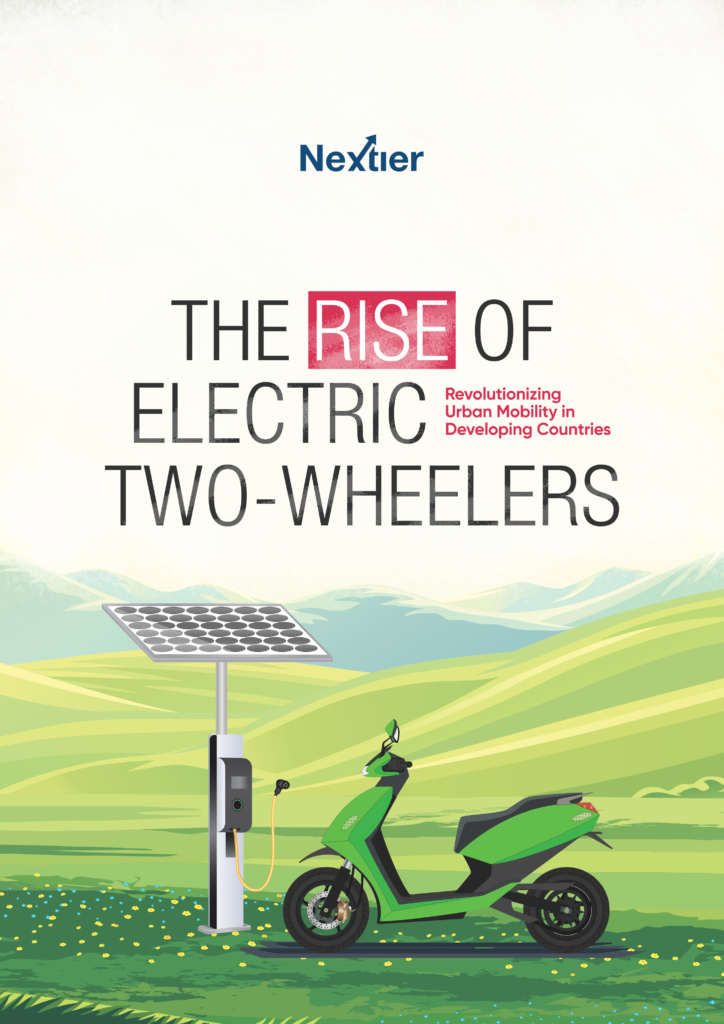
Urban mobility has long been a persistent challenge for developing countries. With rapidly growing populations and limited infrastructure, traffic congestion and pollution have become major concerns.
However, in recent years, a new mode of transportation has emerged as a significant change: electric two-wheelers. Urban mobility is transforming, and electric two-wheelers (E2Ws) are at the forefront of this revolution.
These eco-friendly vehicles are revolutionising urban mobility and changing how people travel in developing countries. Electric two-wheelers, such as e-bicycles, e-mopeds, and e-scooters, have gained momentum recently due to their numerous advantages and emergence as a sustainable alternative.
They address last-mile connectivity, reduce emissions, and enhance accessibility. First, they offer a cleaner and greener alternative to traditional internal combustion engine vehicles.
By minimising carbon emissions, these vehicles contribute to combating the pressing issue of climate change and reducing pollution levels in densely populated cities. By adopting E2Ws, cities can mitigate air pollution and contribute to global climate goals.
Furthermore, electric two-wheelers provide a cost-effective solution for urban transportation. With rising gasoline prices, affordability becomes crucial for most people in developing countries. Compared to cars or motorcycles, electric two-wheelers have significantly lower operating costs.
They require minimal maintenance, and rechargeable batteries are inexpensive and widely available. Another significant benefit is the compact size and manoeuvrability of electric two-wheelers.
These vehicles offer a practical solution in densely packed cities, where traffic congestion is a daily struggle. Their small footprint allows them to navigate through narrow and crowded streets, reducing traffic jams and leading to quicker travel times.
Moreover, promoting cycling and e-bike use improves public health. Regular physical activity reduces sedentary lifestyles and associated health risks.
The rise of electric two-wheelers has created numerous economic opportunities in developing countries. As the demand for these vehicles increases, local manufacturers have started producing electric bicycles and scooters, providing employment opportunities and boosting the economy.
Additionally, developing a charging infrastructure for electric vehicles requires skilled technicians and entrepreneurs, leading to the growth of a new industry and fostering innovation.
Case studies:
India, one of the world’s most populous countries, has been grappling with severe traffic congestion and pollution in its urban centres. In recent years, electric two-wheelers have gained significant traction as a solution to these challenges.
The city of Bengaluru, known for its bustling streets and heavy traffic, has witnessed a surge in the adoption of electric scooters. Startups such as Ather Energy and Bounce have made electric two-wheelers accessible through flexible rental and subscription models, making them an attractive choice for daily commuting.
With their elegant design and zero emissions, these vehicles have helped reduce traffic congestion and improve the city’s air.
China, the most populous country globally and faced with severe air pollution, has made significant strides in promoting electric mobility. Shenzhen, a bustling metropolis in southern China, launched an ambitious initiative to replace traditional motorcycles with electric ones.
The city provided substantial subsidies for electric two-wheelers, making them more affordable than conventional motorcycles. As a result, electric two-wheelers have become a common sight on the streets of Shenzhen, providing residents with cleaner and quieter transportation options.
This initiative has reduced air pollution and helped improve the city’s overall air quality.
Vietnam is another developing country that has embraced electric two-wheelers to transform urban mobility. Ho Chi Minh City in Vietnam has faced severe traffic congestion, especially during peak hours.
To alleviate this issue, the city has introduced electric bus lines and encouraged using electric two-wheelers as a sustainable commuting option. The government has established policies to support the growth of this sector, including tax incentives and investments in charging infrastructure.
As a result, electric two-wheelers have become a popular mode of transportation for residents, providing them with a cost-effective and environmentally friendly means of navigating the city’s busy streets. Considering the environmental, economic, and practical benefits, it is no surprise that electric two-wheelers have found a strong foothold in developing countries.
The governments of these nations have recognised the potential of these vehicles and have implemented policies to support their adoption. In some cases, subsidies and incentives are provided to encourage the purchase of electric two-wheelers.
However, challenges still exist in fully realising the potential of electric two-wheelers. One of the significant obstacles is these vehicles’ limited range and battery life.
While technology is constantly evolving, advancements in battery technology are crucial to extending the distance these vehicles can travel on a single charge. Additionally, ensuring the availability of charging stations throughout urban areas is essential for the widespread adoption of E2Ws.
Providing safe riding practices and enforcing traffic rules are also crucial. Helmets, protective gear, and road safety campaigns are essential.
In conclusion, E2Ws hold immense potential to revolutionise urban mobility in developing countries. These vehicles offer a clean and green alternative to traditional modes of transportation.
They are cost-effective, provide easy manoeuvrability, and stimulate economic growth in these regions. While challenges remain, governments and stakeholders must continue to support the development of electric two-wheelers and work towards creating an infrastructure that accommodates their widespread adoption.
By embracing these eco-friendly alternatives, cities can create cleaner, more accessible, healthier environments for their residents. E2Ws are vehicles and a pathway toward sustainable and inclusive urban futures.